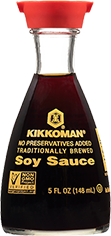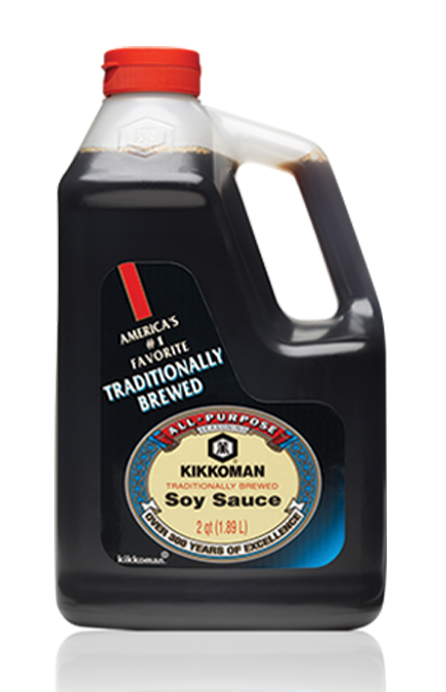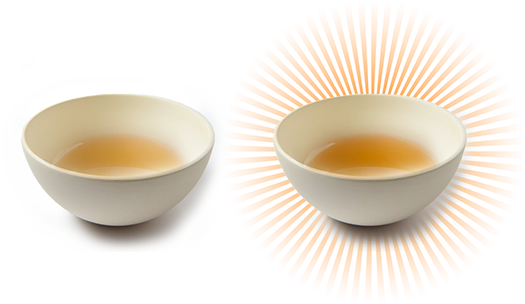Step 1
Selected soybeans and wheat are carefully blended.
Soy sauce is made from just four simple ingredients—water, soybeans, wheat and salt. Those ingredients are transformed through the magic of fermentation, much like the way wine and beer are made. And this traditional brewing process has remained unchanged for centuries.

Selected soybeans and wheat are carefully blended.
Kikkoman Aspergillus is added, and the mixture takes a 3-day nap in a vat known as a “koji bed.”
The mixture, now called koji, is transferred to fermentation tanks where it’s mixed with a saltwater brine to make a mash called moromi.
Next comes the most important ingredient of all: time! It takes several months for the full flavor, color and aroma to develop.
When it’s finally ready, the mash is pressed to extract the raw soy sauce, which is then refined, heat-treated and bottled.

Traditionally brewed Kikkoman Soy Sauce is delicately translucent with an attractive, reddish-brown color. Non-brewed soy sauce is black and opaque
The appetizing bouquet of Kikkoman is complex, yeasty and slightly sweet. Non-brewed soy sauce has an acrid, chemical aroma.
Traditional brewing gives Kikkoman more than 300 distinct flavor and aroma components—including those of fruits, flowers, whiskey and coffee—that come together in perfect harmony to create its unique, distinctive flavor. As it coats your tongue, you can taste its complexity and experience the play of salty, sweet, sour and savory on your palate. Non-brewed soy sauce has a one-dimensional, unpleasant flavor that overpowers other flavors, rather than complementing them.
For today’s popular Asian-inspired menu items Kikkoman® Soy Sauce is the anchor flavor in sauces, marinades and dressings. But that’s just the beginning. It’s also a remarkable flavor enhancer that can actually boost and round out the flavors of other ingredients, adding depth and richness to all kinds of cuisines and foods, from all-American burgers and steaks to Latin, Mediterranean and other globally inspired dishes.
From meat, poultry, and seafood to plant-based options and vegetables, a splash of Kikkoman® Soy Sauce makes everything taste better.

These days, everyone’s talking about umami, the so-called “fifth taste” (the other four being sweet, sour, salty, and bitter). Often described as meaty, savory, or brothy, umami is what you experience when you taste the tongue-coating richness of meat stock, the intensity of Parmesan cheese, the concentrated flavor of sautéed mushrooms, and the complex, sweet-savory depth of naturally brewed Kikkoman® Soy Sauce.
The umami qualities that develop as part of the natural brewing process make Kikkoman one of the most versatile flavor enhancers you can buy. Its complex flavor and delicate aroma help bring out the flavors of other ingredients. Want to add savory depth to a French onion soup or meaty flavor to a veggie burger? Whatever you’re cooking, reach for Kikkoman® Soy Sauce as your go-to “umami in a bottle.”
Want to really understand umami once and for all? Try this DIY


1
Place 1/4 cup warm low-sodium chicken broth or vegetable broth in each of two small bowls. To one bowl, add 1/4 teaspoon Kikkoman® Soy Sauce.

2
Taste the plain broth.

3
Now taste the Kikkoman-enhanced broth. Notice that you don’t really taste soy sauce, but the broth has more depth and a richer flavor.